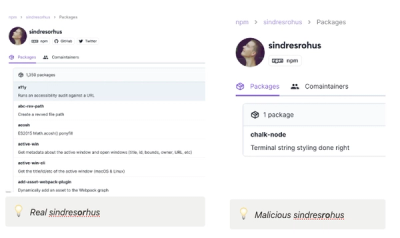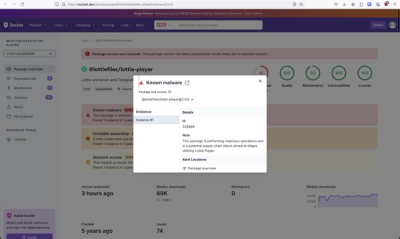JavaScript Load Image
A JavaScript library to load and transform image files.
Contents
Demo
JavaScript Load Image Demo
Description
JavaScript Load Image is a library to load images provided as File or Blob
objects or via URL. It returns an optionally scaled and/or cropped HTML img or
canvas element. It also provides methods to parse image meta data to extract
IPTC and Exif tags as well as embedded thumbnail images and to restore the
complete image header after resizing.
Setup
Include the (combined and minified) JavaScript Load Image script in your HTML
markup:
<script src="js/load-image.all.min.js"></script>
Or alternatively, choose which components you want to include:
<script src="js/load-image.js"></script>
<script src="js/load-image-scale.js"></script>
<script src="js/load-image-meta.js"></script>
<script src="js/load-image-fetch.js"></script>
<script src="js/load-image-orientation.js"></script>
<script src="js/load-image-exif.js"></script>
<script src="js/load-image-exif-map.js"></script>
<script src="js/load-image-iptc.js"></script>
<script src="js/load-image-iptc-map.js"></script>
Usage
Image loading
In your application code, use the loadImage() function like this:
document.getElementById('file-input').onchange = function (e) {
loadImage(
e.target.files[0],
function (img) {
document.body.appendChild(img)
},
{ maxWidth: 600 }
)
}
Image scaling
It is also possible to use the image scaling functionality with an existing
image:
var scaledImage = loadImage.scale(
img,
{ maxWidth: 600 }
)
Requirements
The JavaScript Load Image library has zero dependencies.
However, JavaScript Load Image is a very suitable complement to the
Canvas to Blob library.
API
The loadImage() function accepts a
File or
Blob object or a simple image URL
(e.g. 'https://example.org/image.png') as first argument.
If a File or
Blob is passed as parameter, it
returns a HTML img element if the browser supports the
URL API or a
FileReader object if
supported, or false.
It always returns a HTML
img element when
passing an image URL:
document.getElementById('file-input').onchange = function (e) {
var loadingImage = loadImage(
e.target.files[0],
function (img) {
document.body.appendChild(img)
},
{ maxWidth: 600 }
)
if (!loadingImage) {
}
}
The img element or
FileReader object returned by
the loadImage() function allows to abort the loading process by setting the
onload and onerror event handlers to null:
document.getElementById('file-input').onchange = function (e) {
var loadingImage = loadImage(
e.target.files[0],
function (img) {
document.body.appendChild(img)
},
{ maxWidth: 600 }
)
loadingImage.onload = loadingImage.onerror = null
}
The second argument must be a callback function, which is called when the
image has been loaded or an error occurred while loading the image. The callback
function is passed two arguments.
The first is either an HTML img element, a
canvas element, or an
Event object of type error.
The second is on object with the original image dimensions as properties and
potentially additional meta data:
var imageUrl = 'https://example.org/image.png'
loadImage(
imageUrl,
function (img, data) {
if (img.type === 'error') {
console.error('Error loading image ' + imageUrl)
} else {
document.body.appendChild(img)
console.log('Original image width: ', data.originalWidth)
console.log('Original image height: ', data.originalHeight)
}
},
{ maxWidth: 600 }
)
Options
The optional third argument to loadImage() is a map of options.
They can be used the following way:
loadImage(
fileOrBlobOrUrl,
function (img) {
document.body.appendChild(img)
},
{
maxWidth: 600,
maxHeight: 300,
minWidth: 100,
minHeight: 50,
canvas: true
}
)
All settings are optional. By default, the image is returned as HTML img
element without any image size restrictions.
maxWidth
Defines the maximum width of the img/canvas element.
maxHeight
Defines the maximum height of the img/canvas element.
minWidth
Defines the minimum width of the img/canvas element.
minHeight
Defines the minimum height of the img/canvas element.
sourceWidth
The width of the sub-rectangle of the source image to draw into the destination
canvas.
Defaults to the source image width and requires canvas: true.
sourceHeight
The height of the sub-rectangle of the source image to draw into the destination
canvas.
Defaults to the source image height and requires canvas: true.
top
The top margin of the sub-rectangle of the source image.
Defaults to 0 and requires canvas: true.
right
The right margin of the sub-rectangle of the source image.
Defaults to 0 and requires canvas: true.
bottom
The bottom margin of the sub-rectangle of the source image.
Defaults to 0 and requires canvas: true.
left
The left margin of the sub-rectangle of the source image.
Defaults to 0 and requires canvas: true.
contain
Scales the image up/down to contain it in the max dimensions if set to true.
This emulates the CSS feature
background-image: contain.
cover
Scales the image up/down to cover the max dimensions with the image dimensions
if set to true.
This emulates the CSS feature
background-image: cover.
aspectRatio
Crops the image to the given aspect ratio (e.g. 16/9).
Setting the aspectRatio also enables the crop option.
pixelRatio
Defines the ratio of the canvas pixels to the physical image pixels on the
screen.
Should be set to window.devicePixelRatio unless the scaled image is not
rendered on screen.
Defaults to 1 and requires canvas: true.
downsamplingRatio
Defines the ratio in which the image is downsampled.
By default, images are downsampled in one step. With a ratio of 0.5, each step
scales the image to half the size, before reaching the target dimensions.
Requires canvas: true.
imageSmoothingEnabled
If set to false,
disables image smoothing.
Defaults to true and requires canvas: true.
imageSmoothingQuality
Sets the
quality of image smoothing.
Possible values: 'low', 'medium', 'high'
Defaults to 'low' and requires canvas: true.
crop
Crops the image to the maxWidth/maxHeight constraints if set to true.
Enabling the crop option also enables the canvas option.
orientation
Transform the canvas according to the specified Exif orientation, which can be
an integer in the range of 1 to 8 or the boolean value true.
When set to true, it will set the orientation value based on the EXIF data of
the image, which will be parsed automatically if the exif library is available.
Exif orientation values to correctly display the letter F:
1 2
██████ ██████
██ ██
████ ████
██ ██
██ ██
3 4
██ ██
██ ██
████ ████
██ ██
██████ ██████
5 6
██████████ ██
██ ██ ██ ██
██ ██████████
7 8
██ ██████████
██ ██ ██ ██
██████████ ██
Setting orientation to true enables the canvas and meta options, unless
the browser supports automatic image orientation (see
browser support for image-orientation).
Setting orientation to 1 enables the canvas and meta options if the
browser does support automatic image orientation (to allow reset of the
orientation).
Setting orientation to an integer in the range of 2 to 8 always enables
the canvas option and also enables the meta option if the browser supports
automatic image orientation (again to allow reset).
meta
Automatically parses the image meta data if set to true.
If meta data has been found, the data object passed as second argument to the
callback function has additional properties (see
meta data parsing).
If the file is given as URL and the browser supports the
fetch API or the XHR
responseType
blob, fetches the file as Blob to be able to parse the meta data.
canvas
Returns the image as canvas
element if set to true.
crossOrigin
Sets the crossOrigin property on the img element for loading
CORS enabled images.
noRevoke
By default, the
created object URL
is revoked after the image has been loaded, except when this option is set to
true.
Meta data parsing
If the Load Image Meta extension is included, it is also possible to parse image
meta data automatically with the meta option:
loadImage(
fileOrBlobOrUrl,
function (img, data) {
console.log('Original image head: ', data.imageHead)
console.log('Exif data: ', data.exif)
console.log('IPTC data: ', data.iptc)
},
{ meta: true }
)
Or alternatively via loadImage.parseMetaData, which can be used with an
available File or Blob object as first argument:
loadImage.parseMetaData(
fileOrBlob,
function (data) {
console.log('Original image head: ', data.imageHead)
console.log('Exif data: ', data.exif)
console.log('IPTC data: ', data.iptc)
},
{
maxMetaDataSize: 262144
}
)
The Meta data extension also adds additional options used for the
parseMetaData method:
maxMetaDataSize: Maximum number of bytes of meta data to parse.disableImageHead: Disable parsing the original image head.disableMetaDataParsers: Disable parsing meta data (image head only)
Image head
Resized JPEG images can be combined with their original image head via
loadImage.replaceHead, which requires the resized image as Blob object as
first argument and an ArrayBuffer image head as second argument. The third
argument must be a callback function, which is called with the new Blob
object:
loadImage(
fileOrBlobOrUrl,
function (img, data) {
if (data.imageHead && data.exif) {
img.toBlob(function (blob) {
loadImage.replaceHead(blob, data.imageHead, function (newBlob) {
})
}, 'image/jpeg')
}
},
{ meta: true, canvas: true, maxWidth: 800 }
)
Note:
Blob objects of resized images can be created via
canvas.toBlob.
For browsers which don't have native support, a
canvas.toBlob polyfill
is available.
Exif parser
If you include the Load Image Exif Parser extension, the argument passed to the
callback for parseMetaData will contain the following additional properties if
Exif data could be found in the given image:
exif: The parsed Exif tagsexifOffsets: The parsed Exif tag offsetsexifTiffOffset: TIFF header offset (used for offset pointers)exifLittleEndian: little endian order if true, big endian if false
The exif object stores the parsed Exif tags:
var orientation = data.exif[0x0112]
The exif and exifOffsets objects also provide a get() method to retrieve
the tag value/offset via the tag's mapped name:
var orientation = data.exif.get('Orientation')
var orientationOffset = data.exifOffsets.get('Orientation')
By default, only the following names are mapped:
If you also include the Load Image Exif Map library, additional tag mappings
become available, as well as three additional methods:
exif.getText()exif.getName()exif.getAll()
var flashText = data.exif.getText('Orientation')
var name = data.exif.getName(0x0112)
var allTags = data.exif.getAll()
Exif Thumbnail
Example code displaying a thumbnail image embedded into the Exif meta data:
loadImage(
fileOrBlobOrUrl,
function (img, data) {
var thumbBlob = data.exif && data.exif.get('Thumbnail')
if (thumbBlob) {
loadImage(thumbBlob, function (thumbImage) {
document.body.appendChild(thumbImage)
})
}
},
{ meta: true }
)
Exif IFD
Example code displaying data from the Exif IFD (Image File Directory) that
contains Exif specified TIFF tags:
loadImage(
fileOrBlobOrUrl,
function (img, data) {
var exifIFD = data.exif && data.exif.get('Exif')
if (exifIFD) {
console.log(exifIFD.getAll())
console.log(exifIFD.get('UserComment'))
}
},
{ meta: true }
)
GPSInfo IFD
Example code displaying data from the Exif IFD (Image File Directory) that
contains GPS info:
loadImage(
fileOrBlobOrUrl,
function (img, data) {
var gpsInfo = data.exif && data.exif.get('GPSInfo')
if (gpsInfo) {
console.log(gpsInfo.getAll())
console.log(gpsInfo.get('GPSLatitude'))
}
},
{ meta: true }
)
Interoperability IFD
Example code displaying data from the Exif IFD (Image File Directory) that
contains Interoperability data:
loadImage(
fileOrBlobOrUrl,
function (img, data) {
var interoperabilityData = data.exif && data.exif.get('Interoperability')
if (interoperabilityData) {
console.log(interoperabilityData.get('InteroperabilityIndex'))
}
},
{ meta: true }
)
Exif parser options
The Exif parser adds additional options:
disableExif: Disables Exif parsing when true.disableExifThumbnail: Disables parsing of Thumbnail data when true.disableExifOffsets: Disables storing Exif tag offsets when true.includeExifTags: A map of Exif tags to include for parsing (includes all but
the excluded tags by default).excludeExifTags: A map of Exif tags to exclude from parsing (defaults to
exclude Exif MakerNote).
An example parsing only Orientation, Thumbnail and ExifVersion tags:
loadImage.parseMetaData(
fileOrBlob,
function (data) {
console.log('Exif data: ', data.exif)
},
{
includeExifTags: {
0x0112: true,
0x0201: true,
0x0202: true,
0x8769: {
0x9000: true
}
}
}
)
An example excluding Exif MakerNote and GPSInfo:
loadImage.parseMetaData(
fileOrBlob,
function (data) {
console.log('Exif data: ', data.exif)
},
{
excludeExifTags: {
0x8769: {
0x927c: true
},
0x8825: true
}
}
)
Exif writer
The Exif parser extension also includes a minimal writer that allows to override
the Exif Orientation value in the parsed imageHead ArrayBuffer:
loadImage(
fileOrBlobOrUrl,
function (img, data) {
if (data.imageHead && data.exif) {
loadImage.writeExifData(data.imageHead, data, 'Orientation', 1)
img.toBlob(function (blob) {
loadImage.replaceHead(blob, data.imageHead, function (newBlob) {
})
}, 'image/jpeg')
}
},
{ meta: true, orientation: true, canvas: true, maxWidth: 800 }
)
IPTC parser
If you include the Load Image IPTC Parser extension, the argument passed to the
callback for parseMetaData will contain the following additional properties if
IPTC data could be found in the given image:
iptc: The parsed IPTC tagsiptcOffsets: The parsed IPTC tag offsets
The iptc object stores the parsed IPTC tags:
var objectname = data.iptc[5]
The iptc and iptcOffsets objects also provide a get() method to retrieve
the tag value/offset via the tag's mapped name:
var objectname = data.iptc.get('ObjectName')
By default, only the following names are mapped:
If you also include the Load Image IPTC Map library, additional tag mappings
become available, as well as three additional methods:
iptc.getText()iptc.getName()iptc.getAll()
var keywords = data.iptc.getText('Keywords')
var name = data.iptc.getName(5)
var allTags = data.iptc.getAll()
IPTC parser options
The IPTC parser adds additional options:
disableIptc: Disables IPTC parsing when true.disableIptcOffsets: Disables storing IPTC tag offsets when true.includeIptcTags: A map of IPTC tags to include for parsing (includes all but
the excluded tags by default).excludeIptcTags: A map of IPTC tags to exclude from parsing (defaults to
exclude ObjectPreviewData).
An example parsing only the ObjectName tag:
loadImage.parseMetaData(
fileOrBlob,
function (data) {
console.log('IPTC data: ', data.iptc)
},
{
includeIptcTags: {
5: true
}
}
)
An example excluding ApplicationRecordVersion and ObjectPreviewData:
loadImage.parseMetaData(
fileOrBlob,
function (data) {
console.log('IPTC data: ', data.iptc)
},
{
excludeIptcTags: {
0: true,
202: true
}
}
)
License
The JavaScript Load Image script is released under the
MIT license.
Credits
- Image meta data handling implementation based on the help and contribution of
Achim Stöhr.
- Exif tags mapping based on Jacob Seidelin's
exif-js library.
- IPTC parser implementation by Dave Bevan.



